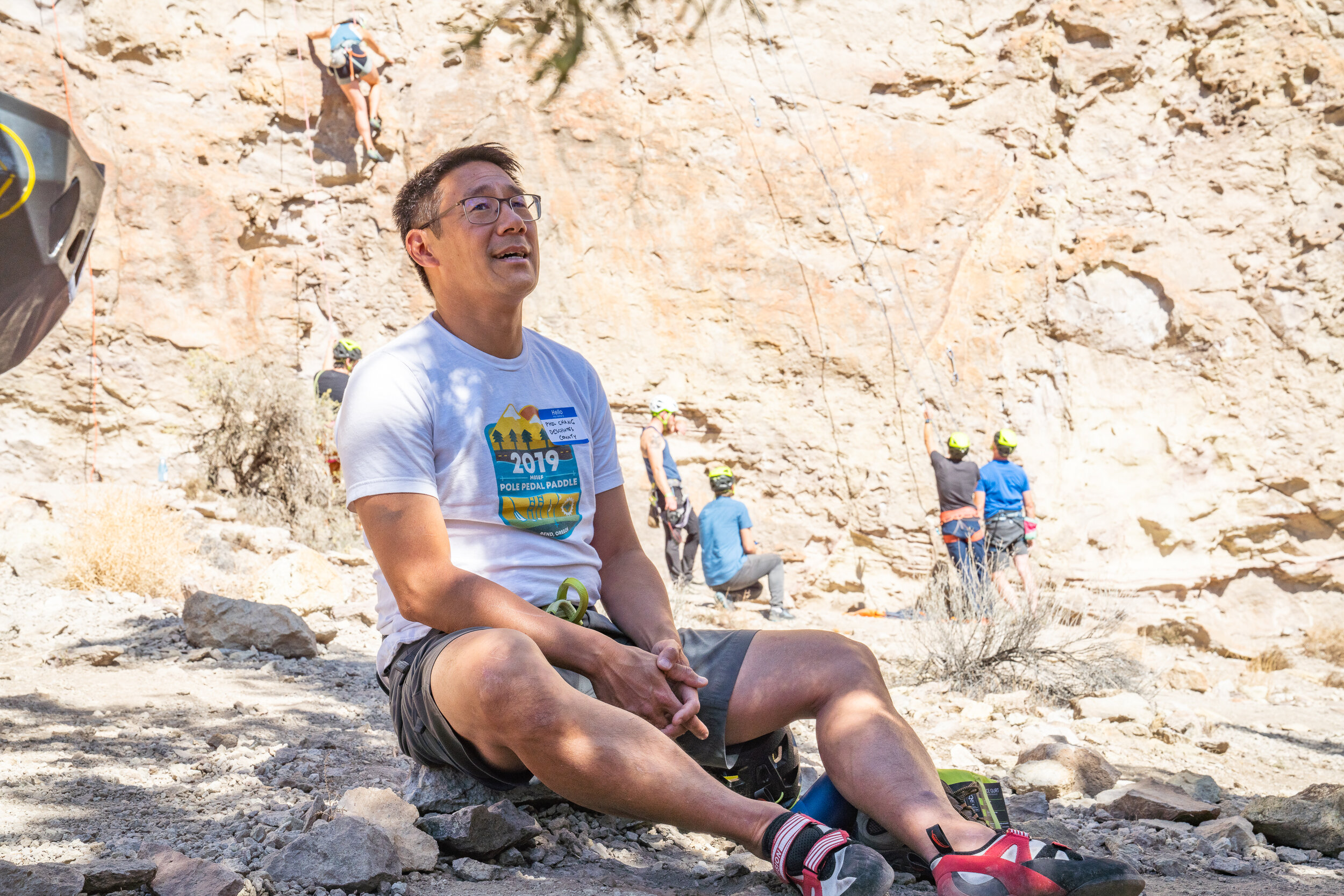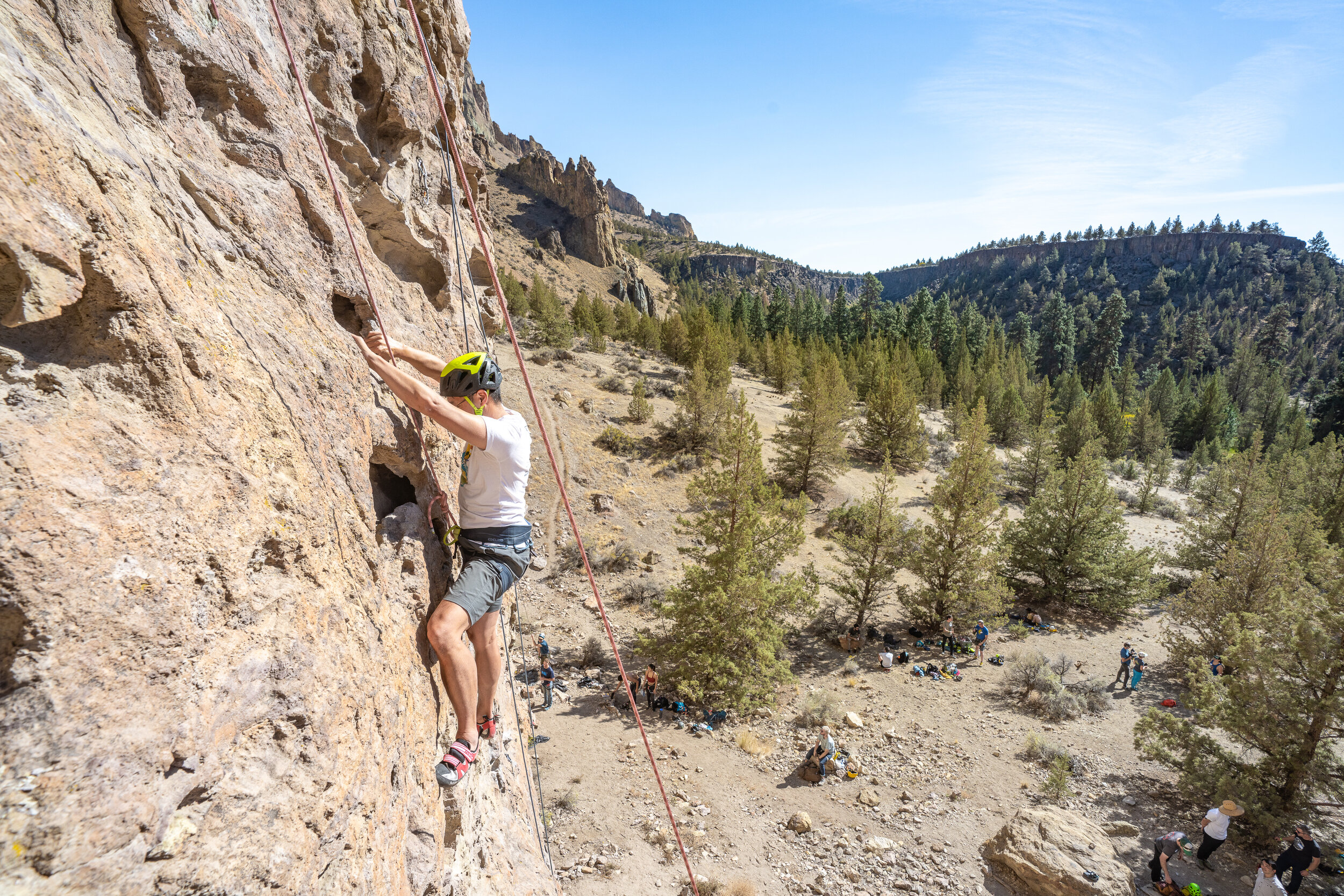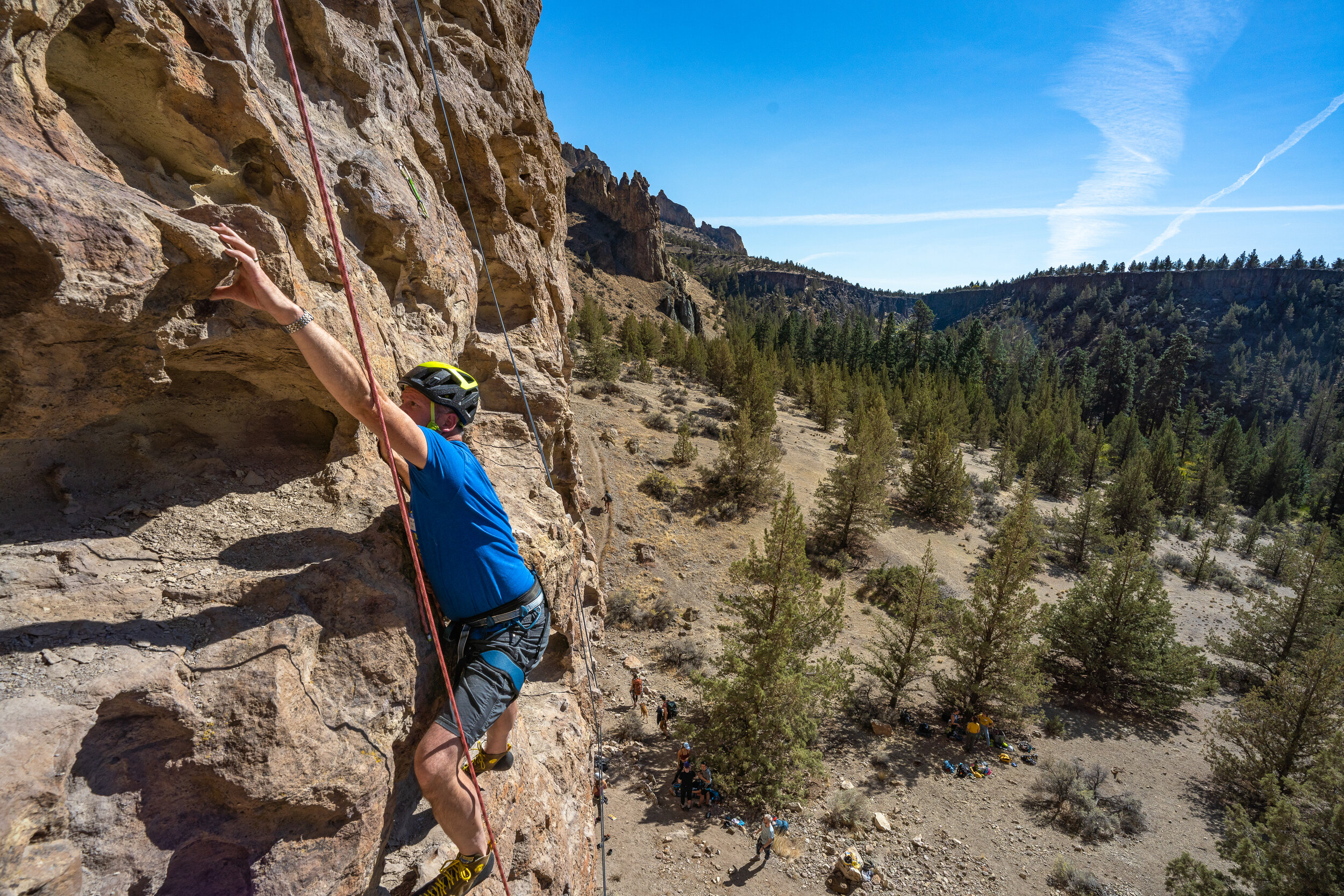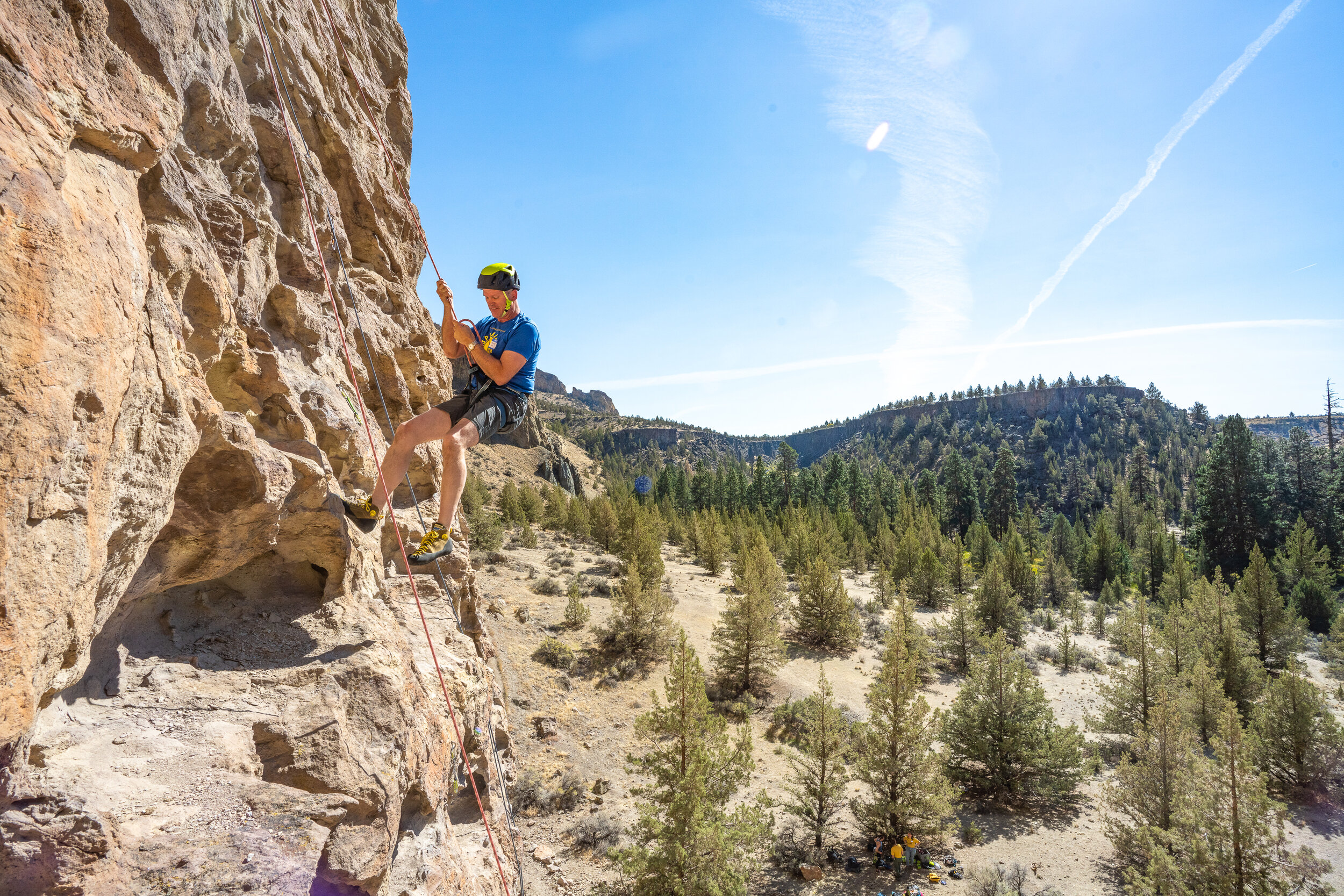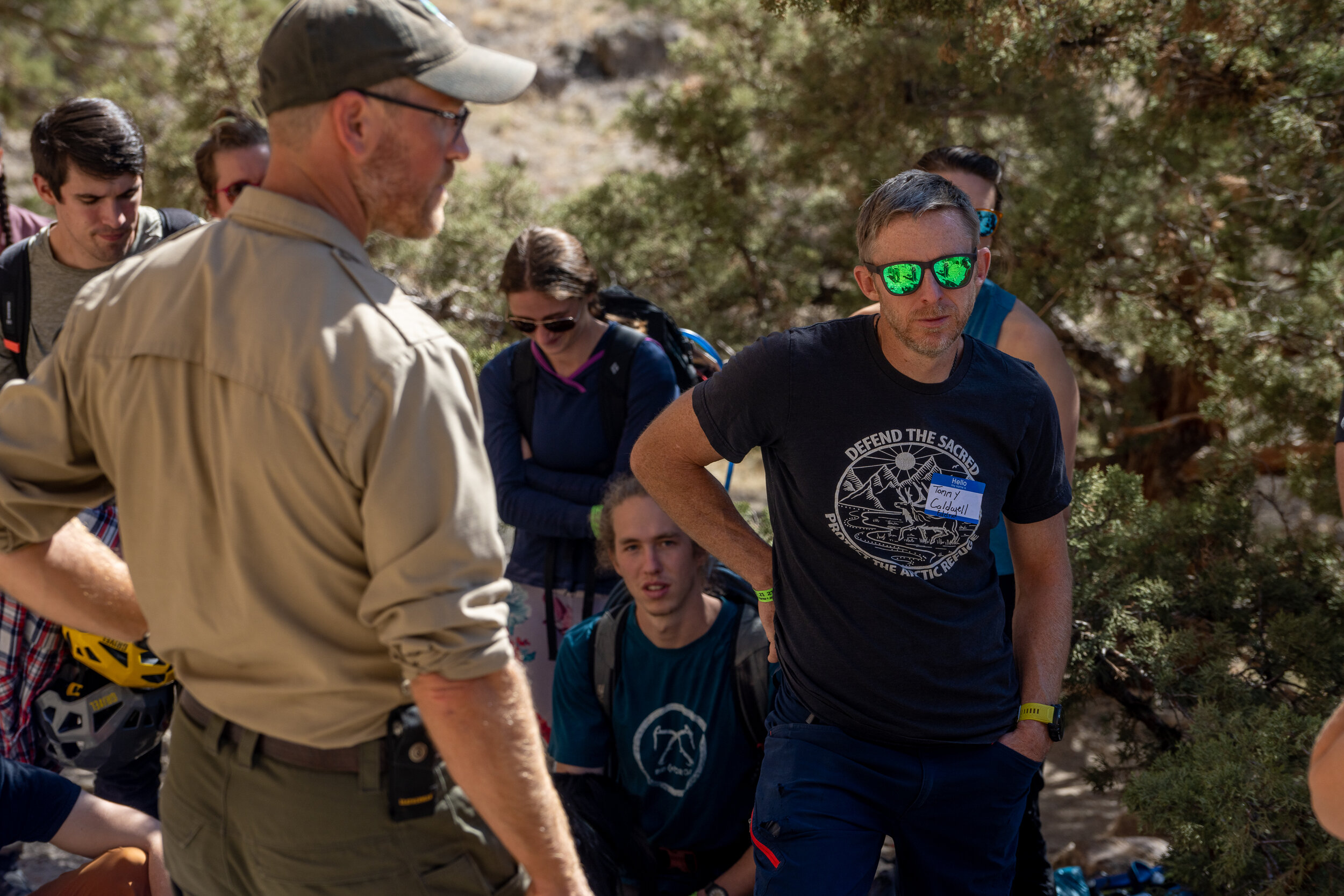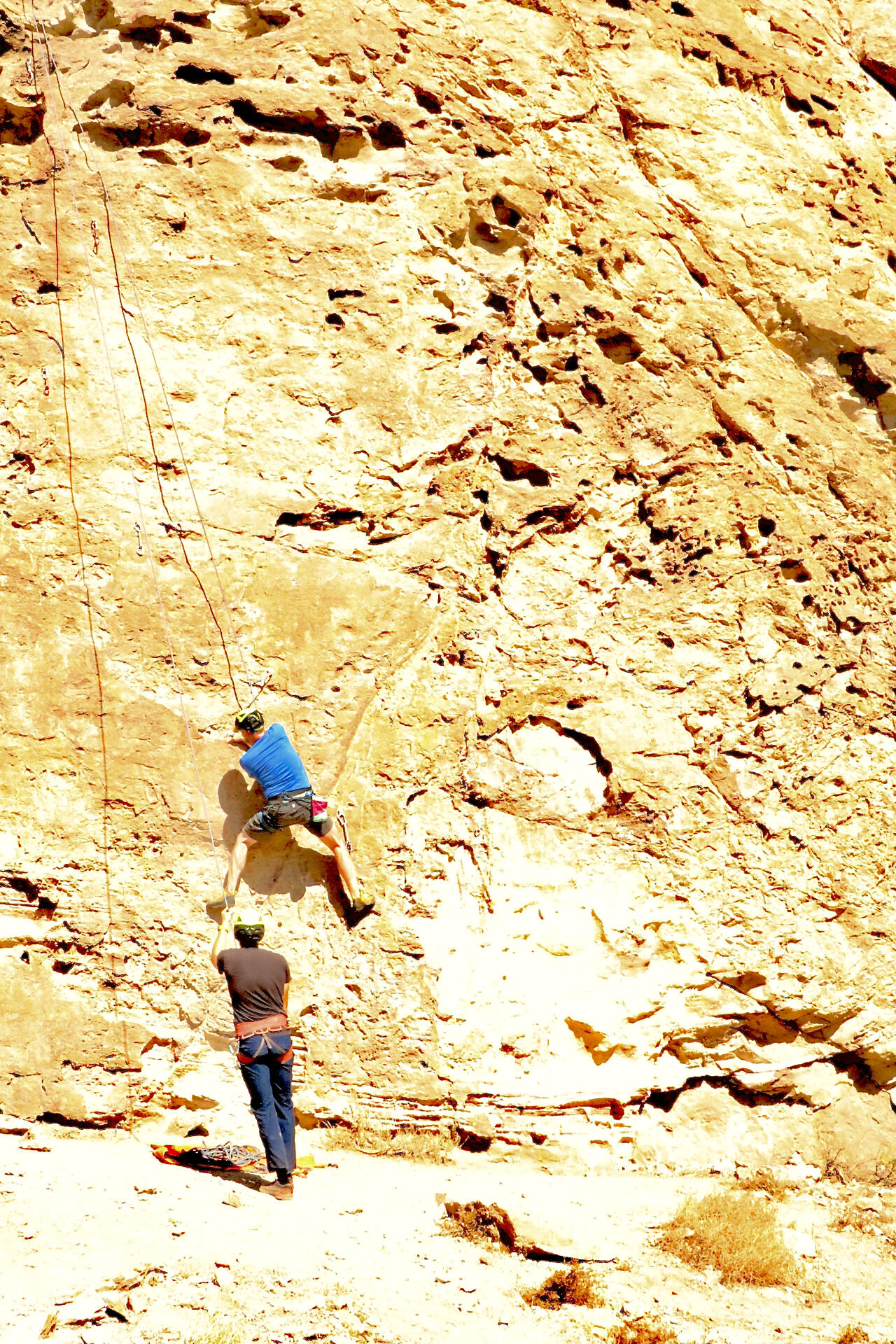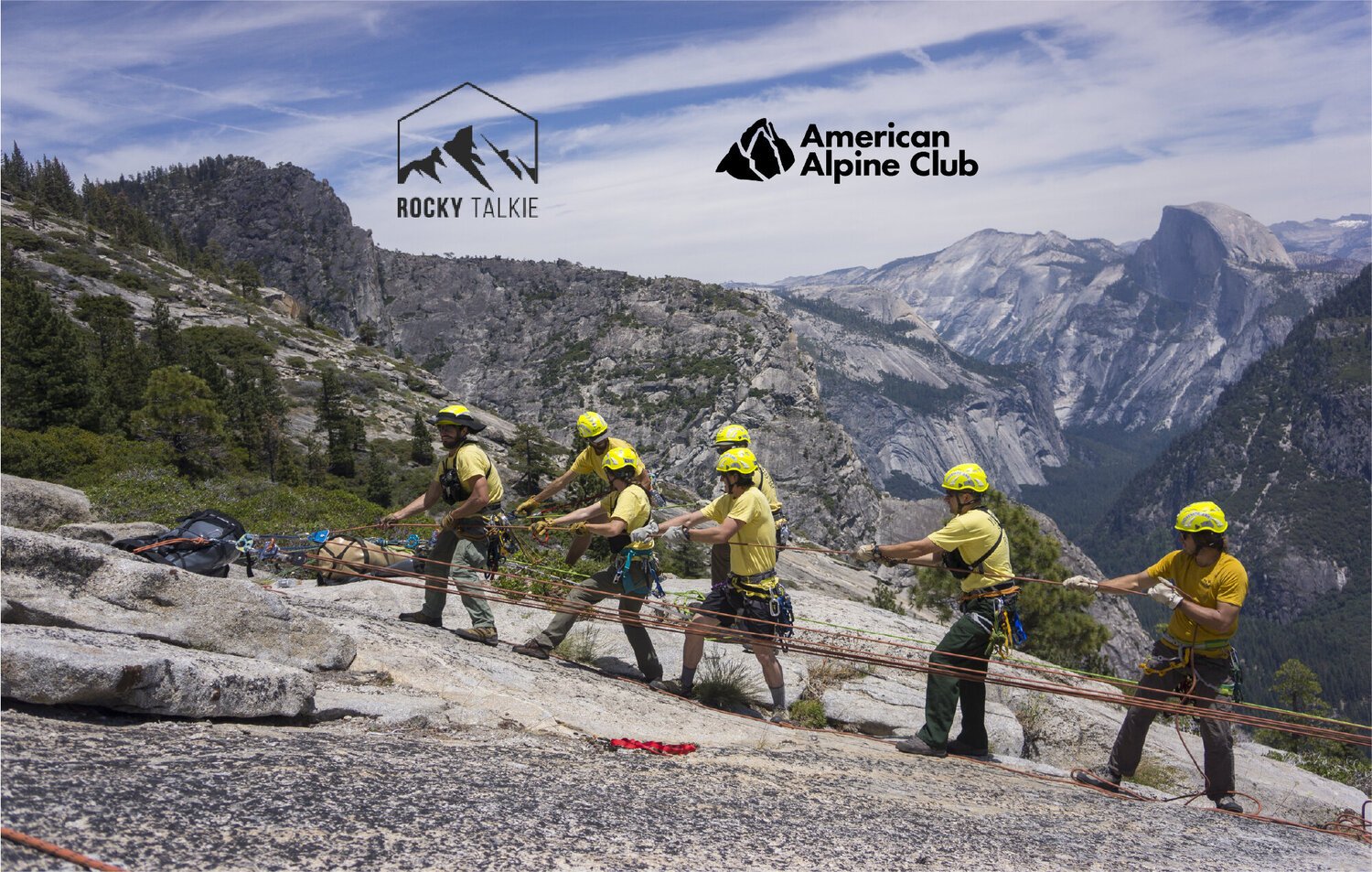You may remember AAC Volunteer Lieutenant Colonel Byron Harvison, who was a part of the first AAC Hill to Crag in 2018, bringing veterans into conversations with policy makers to advocate for public lands and conservation. This Veteran’s Day, we checked in with Lieutenant Colonel Harvison, and found that he’s thriving. Alongside his friends, fellow veterans and outdoor enthusiasts, Josh Jespersen, Dustin Kinsling, and Benjamin Davis, Byron has been using the connections he made during the 2018 Hill to Crag to create even more opportunity for veterans to utilize the outdoors as a resource for healing, focus, and new purpose. Jespersen, Kinsling, and Davis founded Veterans Outdoor Advocacy Group (VOAG) in 2019, and they are already making change happen, with even more exciting new initiatives coming down the line.
Byron Harvison is still on active duty, assigned to State Judge Advocate for the Utah National Guard. He is a lifetime climber, skier, and biker, as well as a dad. He has been deployed multiple times in Afghanistan and Kuwait and has been a long time AAC volunteer, including holding the position of Chair for the AAC Salt Lake Chapter.
Josh Jespersen grew up in PA as a total ski bum, but at 18 joined the military and served 6 years as a Navy SEAL in Iraq and Afghanistan. On returning home, he moved to CO and threw himself into backcountry skiing and splitboarding. He began to explore the mountains in a way he never had before. Josh started working for nonprofits that were getting veterans outside, and along the way realized that the veterans around him needed to see other veterans carving out new pathways for themselves. Josh felt called to prove that you can go out and do amazing things with your life post-service, that military service doesn’t have to be the last chapter—there are new chapters to write. He decided to push the envelope and set out to ski all of Colorado's 14ers as fast as he could, and Josh ended up setting a record, beating the old record of 361 days, by doing it in 138 days. Besides skiing all of CO 14ers in a single ski season, Josh is currently a mountain guide and avalanche educator.
As outdoor lovers and athletes, both Byron and Josh, alongside Dustin Kingsling and Benjamin Davis, realized the importance of creating space and opportunity for veterans to utilize outdoor therapy as a resource. Veterans Outdoor Advocacy Group (VOAG) began as a lobbying organization to make that opportunity possible. In 2019, the Accelerated Recovery Veterans Outdoors Act caught Josh’s eye, and he began tracking it, but noticed that it wasn’t gaining any momentum. The bill basically mandated that the Veterans Administration (VA) study the efficacy of adjunct outdoor therapy. In effect, the outcome of this bill would mean that veterans down the line could be prescribed time outside instead of overwhelmingly relying on prescription medication to treat PTSD, drug addiction, or other challenges that many veterans face. For Josh and the others, they couldn’t be happy with looking back in 10 years and not being able to say they had done everything in their power to get this bill passed, because they each personally knew the impact and importance of the outdoors for their own wellbeing. This was a weak point in the VA that this bill could remedy. VOAG was created; and with laser focus, the team lobbied and wrote emails to representatives relentlessly, until the bill was ultimately passed in 2020.
In 2020, VOAG also created an initiative to train veterans as hunting and fishing guides. Josh and Byron note that outdoor guiding can be a huge source of employment—beyond the value of therapy that VOAG already advocates—for vets as they transition from the military. Moving forward, VOAG is excited to advocate for greater access to AMGA training for veterans, alongside many other initiatives and issues.
This Veterans Day, VOAG is also launching a new program called “31 FOR 31.”
The 31 FOR 31 project is meant to remember the men who died aboard a CH-47 helicopter on August 6, 2011, call sign “Extortion 17.” Thirty-one Americans and 7 Afghan Nationals were killed when the vessel was shot down in Maidan Wardak Province of Afghanistan. The tragedy resulted in the greatest individual loss of life for the US Forces during the war in Afghanistan. Over the course of 31 weeks, between 1 January, 2022 and August 6, 2022, VOAG and its coalition partners, will take 31 Veterans into the outdoors in various capacities from climbing, hiking, skiing, mountain biking, hunting, and fishing. All of these trips will focus on remembering one of the 31 Americans along with the 7 Afghans who were killed more than 10 years ago in the Hindu Kush Mountains.
For Byron, not only should the outdoors and outdoor therapy be a ready resource for veterans, but veterans are an untapped resource as stewards of the land. As someone who has always felt a calling to serve, Byron has manifested that in his military service, but also in his commitment to the outdoors and his responsibility to the places he plays in. The AAC is so grateful to have volunteers like him who are taking their commitment to climbing and its community-building potential into other spaces, widening the power and accessibility of climbing. And in the spirit of VOAG’s mission, the AAC offers a special discounted military membership for active duty, reserves, and veterans. Learn more here!
If you’d like to learn more about VOAG, check out their website here. Learn more about their new initiative “31 FOR 31” here. And check out this film, featuring Josh Jespersen, to dive deeper into what the outdoors can do for veterans.


















